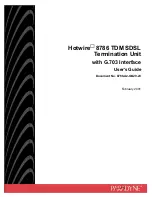
Page 19
8.2
Making Voltage and Current Dual Measurements
Measuring ac and dc Volts, or ac Volts and frequency, etc. still only require two measurement
probes because both parameters of the dual measurement are made at the same physical
point. Simultaneous measurement of voltage and current on the same circuit will however
require a third connection, see the diagram:
Note that the voltage measured at the multimeter terminals is that across the load
plus the
voltage drop in the common lead
which is now carrying the whole circuit current. Even if the
resistance of the lead is very low, errors may arise at high currents and low voltages (i.e. low
load resistance) because the lead resistance becomes significant compared with the load.
8.3
Measurement Update Times
As discussed at the beginning of this section, the reading update rate is reduced in Dual
Measurement Mode because the two readings are made alternately. However, the reading rate
is not simply halved because enough time must be allowed for each measurement to fully settle
to the different conditions before the display is updated; unless this is done neither display will
reliably show the true measurement value. The settling time depends on the differences
between the main and secondary measurement range, function, and signal level; the delay is
longest when both displays show an ac measurement. Note that the settling times allowed
assume a steady state signal; varying signals, or signals that exceed the range maximum on
either measurement, will give unpredictable readings.
The following table summarises the measurement time (i.e. the time for the measurement to settle
and the display to be updated) for each parameter in all the permitted display combinations.
















































